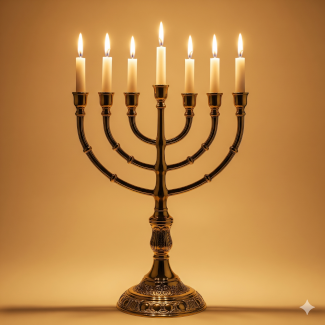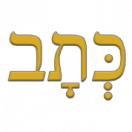The 7 Feasts of Israel
The seven feasts of Israel, also known as the “appointed times” or “holy convocations,” are a series of annual festivals commanded by God in Leviticus 23. These feasts were significant to the ancient Israelites, serving as a reminder of God’s faithfulness and a rehearsal of His redemptive plan. They are divided into two main groups: the spring feasts and the fall feasts.

The Spring Feasts
These four feasts occur in the early months of the Jewish calendar and are seen as prophetic pictures of Jesus’s first coming.
- Passover (Pesach): This feast commemorates the Israelites’ redemption from slavery in Egypt. It recalls the final plague, where the blood of a sacrificed lamb on the doorposts of their homes caused the angel of death to “pass over” them. It is seen as a foreshadowing of Jesus as the ultimate Passover Lamb, whose sacrifice brings salvation from sin.
- Feast of Unleavened Bread (Hag HaMatzot): Occurring immediately after Passover, this seven-day feast involves the removal of all leavened products from the home. Leaven often symbolizes sin in the Bible. This feast remembers the haste with which the Israelites left Egypt and represents a holy life set apart from sin, a picture of Jesus’s sinless life and body.
- Feast of Firstfruits (Yom HaBikkurim): This feast celebrated the first barley harvest. A sheaf of the first crops was waved before the Lord as an offering of thanks. It is a prophetic symbol of Jesus’s resurrection, as He is the “firstfruits” of those who have risen from the dead.
- Feast of Weeks (Shavuot or Pentecost): This feast is celebrated 50 days after the Feast of Firstfruits and marks the wheat harvest. It is also associated with the giving of the Law on Mount Sinai. In the New Testament, it was on this day that the Holy Spirit was poured out on the disciples, birthing the Christian church, and extending God’s grace to both Jews and Gentiles.
The Fall Feasts
These three feasts occur in the fall and are often seen as prophetic of Jesus’s second coming and the events that will follow.
- Feast of Trumpets (Yom Teruah or Rosh Hashanah): This feast begins the fall season of feasts with the blowing of trumpets. It is a call to repentance and preparation for the Day of Atonement. Many see this as a symbol of the future “ingathering” of Israel and the second coming of the Messiah, heralded by the sound of a trumpet.
- Day of Atonement (Yom Kippur): This is the most solemn day of the Jewish year, a day of fasting and repentance. The high priest would enter the Holy of Holies to make a sacrifice for the sins of the entire nation. It represents the ultimate atonement for sin and is a picture of Jesus’s final sacrifice for all humanity.
- Feast of Tabernacles (Sukkot): This seven-day harvest festival is a joyous celebration where the Israelites lived in temporary shelters or “booths” (sukkot). It commemorates God’s provision and protection during their 40 years of wandering in the wilderness. It is a prophetic symbol of the future Messianic kingdom, when God will “tabernacle” or dwell with His people on earth.
Biography:
Jeremiah Lamenting the Destruction of Jerusalem, oil on panel by Rembrandt, 1630: in the Rijksmuseum, Amsterdam. https://www.britannica.com/biography/Jeremiah-Hebrew-prophet/Prophetic-vocation-and-message#/media/1/302676/251154

